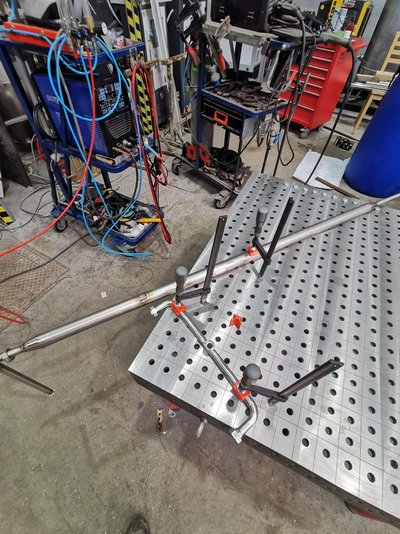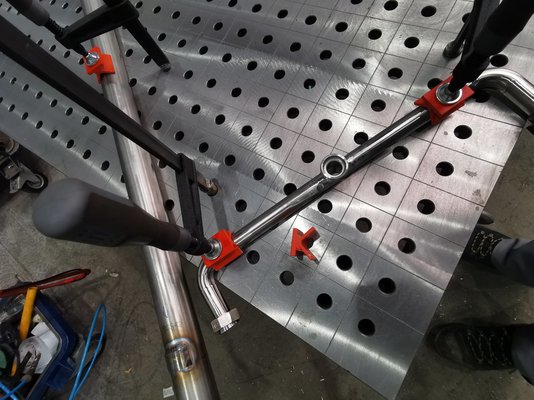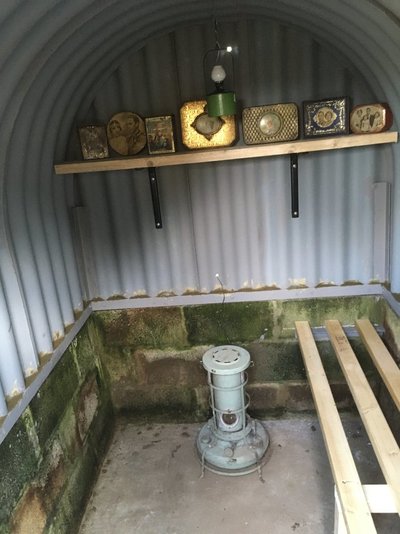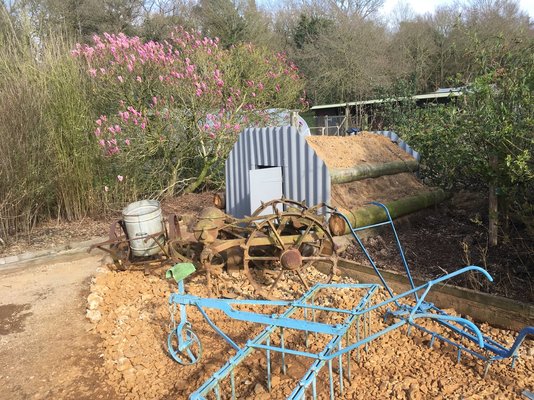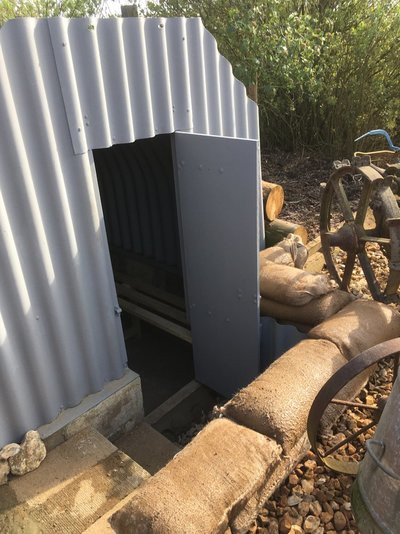You are using an out of date browser. It may not display this or other websites correctly.
You should upgrade or use an alternative browser.
You should upgrade or use an alternative browser.
Stuff you have made today
- Thread starter God mode restorations
- Start date
James1979
Member
- Messages
- 8,434
- Location
- Orkney
I had that issue on one I made a while back but thickened the ears up on this one.you may find like i did recently, mild steel makes an absolutely useless spanner. And the ears just keep bending out ways.
I made a 38 when I sent him that, just scaled it to 65.
My 38 didn’t bend but it wasn’t stupidly tight, just access.
Yes Brad I had your spanner in mind as I was doing it. The hex that it engages with isn't very wide however re-inforcement on one side would be OK.
Frankly my cut quality on this plate is bad with too much taper - I need to sort my settings out better - I'm usually only cutting 1.2 - 3 mm sheet. I may end up running a bead of weld down the contact faces and grinding back to flat
Frankly my cut quality on this plate is bad with too much taper - I need to sort my settings out better - I'm usually only cutting 1.2 - 3 mm sheet. I may end up running a bead of weld down the contact faces and grinding back to flat
Sergei Slovenija
Member
- Messages
- 1,267
- Location
- Slovenija Ljubljana
Nice. How did you cut that profile? Rotary table or something fancy?A 65 mm flogging spanner to undo the end caps of some hydraulic cylinders on my JCB 3CX
Thanks to @James1979 for sending me a .DXF file and @Pete. for donating the 9 mm plate cut from the webs of RSJ's I believe (which were covered in the most intractable paint. Two top layers came off with Methylene Chloride but the primer needed a stripping disk !(
View attachment 393925
If I looked at the other posts I should have figured that out myself. Thanks.@6ply CNC Plasma table
Brad93
Member
- Messages
- 19,085
- Location
- Essex, United Kingdom
yes i had to mill the ears due to taper but knew the cutter would cut the part undersize allowing a bit of material removalYes Brad I had your spanner in mind as I was doing it. The hex that it engages with isn't very wide however re-inforcement on one side would be OK.
Frankly my cut quality on this plate is bad with too much taper - I need to sort my settings out better - I'm usually only cutting 1.2 - 3 mm sheet. I may end up running a bead of weld down the contact faces and grinding back to flat
Erie Fred
Member
- Messages
- 5,924
- Location
- Erie, Pa USofA
Just saw your video about the CNC table of yours and it's problems.yes i had to mill the ears due to taper but knew the cutter would cut the part undersize allowing a bit of material removal
Did you get it sorted out ?
Brad93
Member
- Messages
- 19,085
- Location
- Essex, United Kingdom
In short, no.Just saw your video about the CNC table of yours and it's problems.
Did you get it sorted out ?
It's a poorly designed table, made for a price. A price much much lower than what it retails for.
The software is also awful.
Im not the only one with problems, people with the professional tables costing 20-30k also having non stop problems.
Hence why all the other makers of lower end plasmas have taken over, and you barely see swift cut advertised now.
I can basically work with the issues, for the amount we use it.
If i was in @Hood or @henry Kadzielski where it's a production tool i think i'd be trying to flog it on
DAPPH
as dyslexik as I'm daft
- Messages
- 7,491
- Location
- Near to Cross Hands Llanelli SouthWales GB
As a hobbyist player I often use WD40 to give things a cooing spray every now & then , got a Shipman's fish paste jar with compressor oil in it attached to a bracket on the head stock body and a pigs hair artist brush in it for times when things need a drop of better oil coolingMy take on this is that coolant is fine and well if your lathe works for a living, but if it’s an occasional use or hobby, the cleaning takes up more time than it’s worth?
DAPPH
as dyslexik as I'm daft
- Messages
- 7,491
- Location
- Near to Cross Hands Llanelli SouthWales GB
I hope to have a go at plasma cutting a hex ring spanner some 3" A/F could be fun ..it's only to undo a big nut on a hydraulic jack body head might look for 5 mm flat steel and weld the 12 mm key steel faces in around the nut for good fit ..... It's go to be more accurate than me freehand plasma cutting in 12 mm plate on my cheapie Parkside machine.In short, no.
It's a poorly designed table, made for a price. A price much much lower than what it retails for.
The software is also awful.
Im not the only one with problems, people with the professional tables costing 20-30k also having non stop problems.
Hence why all the other makers of lower end plasmas have taken over, and you barely see swift cut advertised now.
I can basically work with the issues, for the amount we use it.
If i was in @Hood or @henry Kadzielski where it's a production tool i think i'd be trying to flog it on
Maker
Most folk just call me; Orange Joe
- Messages
- 10,616
- Location
- Keeler crater
Proper cutting oil works noticeably better than bog standard lubricating oil.compressor oil
Dcal
Member
- Messages
- 4,079
- Location
- Antrim Northern Ireland
Today I made a rivet nut setting tool.
I needed to replace a 8mm rivet nut but don't have a setting tool or have much call for one so, I made a quick, simple tool to set it.
Bit of M16 thread bar with a 8.5 hole drilled through it on the lathe and locked two nuts on it.
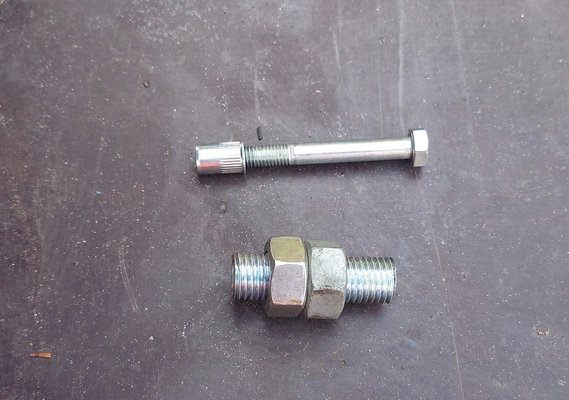
Squared the ends so the nut would grip and oiled the rivet nut threads and under the 8m bolt head.
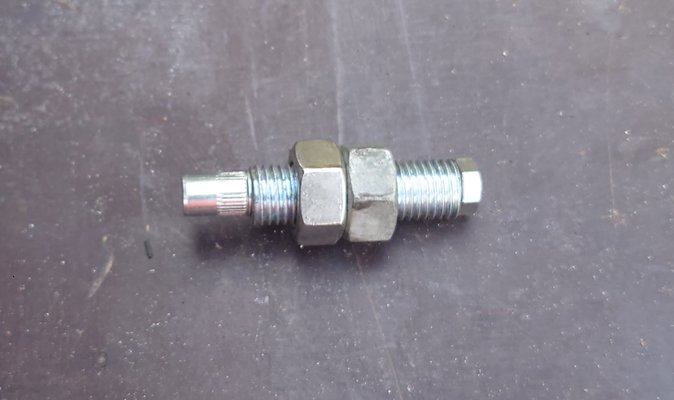
Held the 16mm nuts and turned the 8mm bolt with a ratchet spanner and it worked a treat.
I would have struggled to get a setting tool in so I'm pleased with how it worked out.
If I had a small thrust bearing it would have worked even better but perfectly serviceable for a one off.
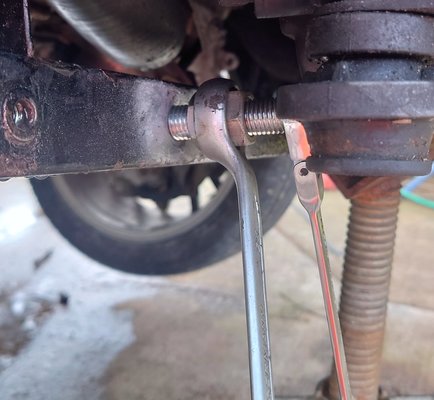
I needed to replace a 8mm rivet nut but don't have a setting tool or have much call for one so, I made a quick, simple tool to set it.
Bit of M16 thread bar with a 8.5 hole drilled through it on the lathe and locked two nuts on it.

Squared the ends so the nut would grip and oiled the rivet nut threads and under the 8m bolt head.

Held the 16mm nuts and turned the 8mm bolt with a ratchet spanner and it worked a treat.
I would have struggled to get a setting tool in so I'm pleased with how it worked out.
If I had a small thrust bearing it would have worked even better but perfectly serviceable for a one off.

redlig
Member
- Messages
- 4,155
- Location
- wiltshire uk
Slurry can also have an anti rust quality so no need for extra lube.Proper cutting oil works noticeably better than bog standard lubricating oil.
Not expensive if the stuff you use is watered down to use. I use Silkolene soluble cutting fluid that seems to last forever.
Memmeddu
Member
- Messages
- 5,339
- Location
- Italia Sardegna
Today after work and school (related to my job)
I've repaired a felisatti 230mm angle grinder
Which has been run over by a daily
So I've had to replace both switch and handle.
I've dismantling Various broken tools for parts so I've used an early 2000's Milwaukee handle and an early 2000's Metabo switch .
I've then assembled together a Milwaukee AG 20-230 from the same time period by salvage parts from other 2 same grinders.
And it actually works very well.
Need to find or make brush covers , replace the power cord with a longer one clean it up and find an auxiliary handle for it.
First one was a paid job second one it's just a tool of mine.
I still have many tools here for repair
Tomorrow a second round
Another felisatti I have here from August, various concrete mixers.
After that I can proceed with my projects, Money First
I've repaired a felisatti 230mm angle grinder
Which has been run over by a daily
So I've had to replace both switch and handle.
I've dismantling Various broken tools for parts so I've used an early 2000's Milwaukee handle and an early 2000's Metabo switch .
I've then assembled together a Milwaukee AG 20-230 from the same time period by salvage parts from other 2 same grinders.
And it actually works very well.
Need to find or make brush covers , replace the power cord with a longer one clean it up and find an auxiliary handle for it.
First one was a paid job second one it's just a tool of mine.
I still have many tools here for repair
Tomorrow a second round
Another felisatti I have here from August, various concrete mixers.
After that I can proceed with my projects, Money First
droopsnoot
Member
- Messages
- 1,298
- Location
- South Cheshire, UK
When I needed to do this with some 3/16" UNF rivet nuts, I did something a lot more rough and ready - a high tensile bolt (not sure if it needed to be), a nut and washer, then the rivet nut, into the panel and a washer and bolt on the other side. Tightening the nuts towards each other was sufficient. Of course, that was a much smaller rivet nut so easier to collapse, and I had access to the back. I was putting them in a door skin because I wasn't about to stick self-tappers (the "correct" fixings) through my new paint. I'll keep this in mind though if I need to do bigger stuff.Today I made a rivet nut setting tool.
I needed to replace a 8mm rivet nut but don't have a setting tool or have much call for one so, I made a quick, simple tool to set it.
Bit of M16 thread bar with a 8.5 hole drilled through it on the lathe and locked two nuts on it.
I've done similar - mainly because the die-cast rivet style tool I had for aluminium rivnuts would have simply snapped trying to pull up steel or stainless steel ones.When I needed to do this with some 3/16" UNF rivet nuts, I did something a lot more rough and ready - a high tensile bolt (not sure if it needed to be), a nut and washer, then the rivet nut, into the panel and a washer and bolt on the other side. Tightening the nuts towards each other was sufficient. Of course, that was a much smaller rivet nut so easier to collapse, and I had access to the back. I was putting them in a door skin because I wasn't about to stick self-tappers (the "correct" fixings) through my new paint. I'll keep this in mind though if I need to do bigger stuff.
Martin Hocking
Member
- Messages
- 452
- Location
- Norfolk




